
A Time for a Winey Christmas
December 21, 2016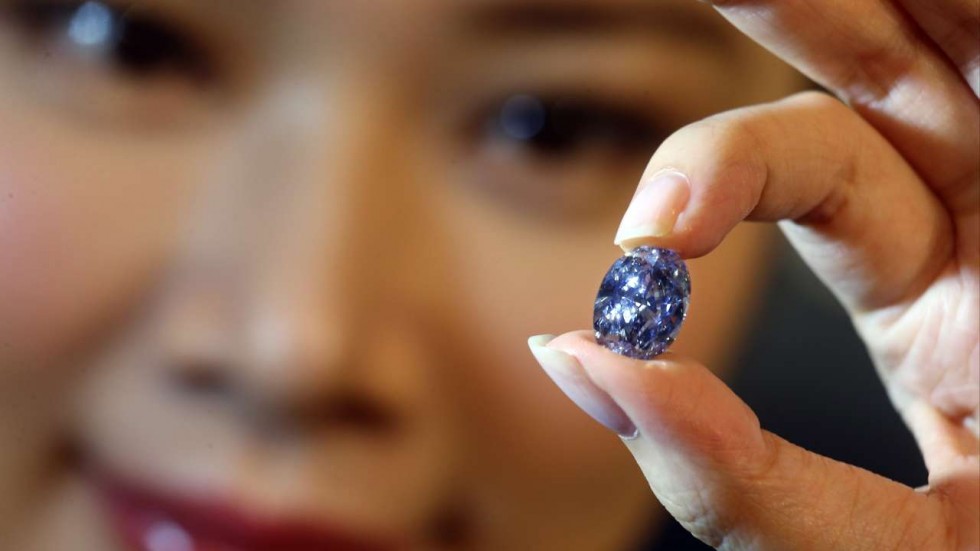
Coloured Diamonds Are Forever
December 25, 2016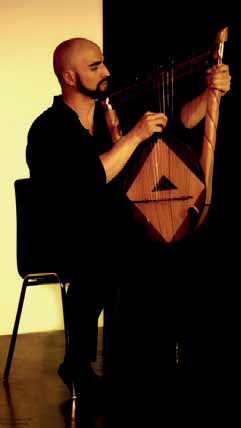
A new name is causing an artworld sensation.
Mataro da Vergato mixes photos with digital tech to create works like Renaissance paintings. Massimo Gava reports on a man collected by Silvio Berlusconi.
Picasso once said that an artist is a receptacle for emotions that come from all over the place: from the sky, from the earth, from a scrap of paper, from a passing shape. Some of the best themes in high art are
universal and enduring, eternal, religious and faithful.
So, let’s meet one artist who takes his inspiration from many sources, many of them echoing high religion and lower base instinct.
Mataro da Vergato accepts his leads from images and concepts both new and old. His works are as breathtakingly monumental as centuries-old museum-quality paintings. There are masks of carnivals or identity; martyrdom of saints; mild Madonnas and fierce Mars figures in scenes of piety and mythology, Christian, Greek and Roman.
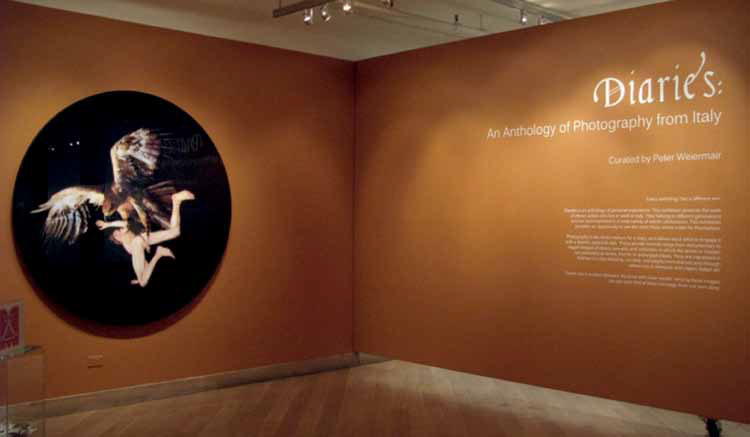
Ganymedes by Mataro – Diaries Exhibition Leslie Lohman Musium – N.Y.
But these are thoroughly modern classics with the most high-tech conceptions.
In his 1920 book Beyond the Pleasure Principle, Sigmund Freud referred to the character of Eros representing as the life instinct, and his counterpart Thanatos, as the death instinct. These two sides were constants in the past in the great Renaissance masterpieces by Michelangelo Buonarroti, Raphael, Titian and many others. (This of course fits right in with our DANTE overarching theme of the Renaissance in us!)
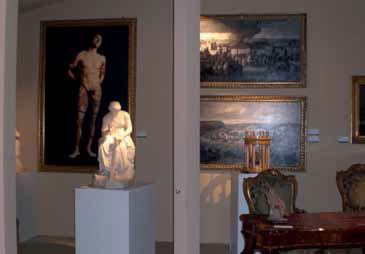
Sebastian Martyrdom
Palazzo Venezia Biennale Internazionale di Antiquariato 2008
Using oil paint and optical perspective, the Old-Master artists used the latest techniques; and now Mataro da Vergato is doing the same with 21st-centryt technology. “My tools are using photography like a design of light and the computer like my colour palette,” he explains. The unique and limited-edition digital images are often mistaken for real paintings and they are rendered in different media: canvas, resin, acrylic digital, PVC and light box.
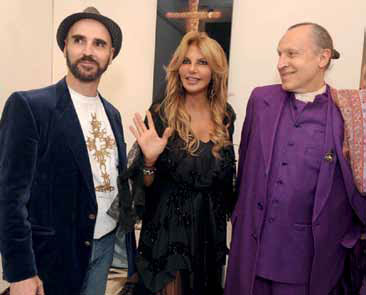
Mataro da Vergaro, Olimpia Orsini and luigi Orsini
Mataro Da Vergato is a pseudonym that comes from his paternal grandfather and the village in Italy where he was born. He graduated from the Academy of Fine Arts in Bologna and then discovered the power of the computer in New York, kick-starting what he calls his Digital Graphic Period (1990-1996). From then on he has been in a Digital Painting Period.
His work has been presented at the Biennale Art of Venice and the Leslie Lohman Museum in New York in 2012 as well as included in public and private collections. The artist also works as performer, choreographer, actor and theatre director, and has collaborated with the likes of Carla Fracci, Rudolf Nureyev, Vittorio Gassman, Jerome Savary and Franco Zeffirelli.
Leonardo Da Vinci once said: “Colours, like features, follow the changes of the emotions.”
We decided to choose and give space to some images that are representative of Mataro’s work and let the images speak for themselves with just a little commentary below.
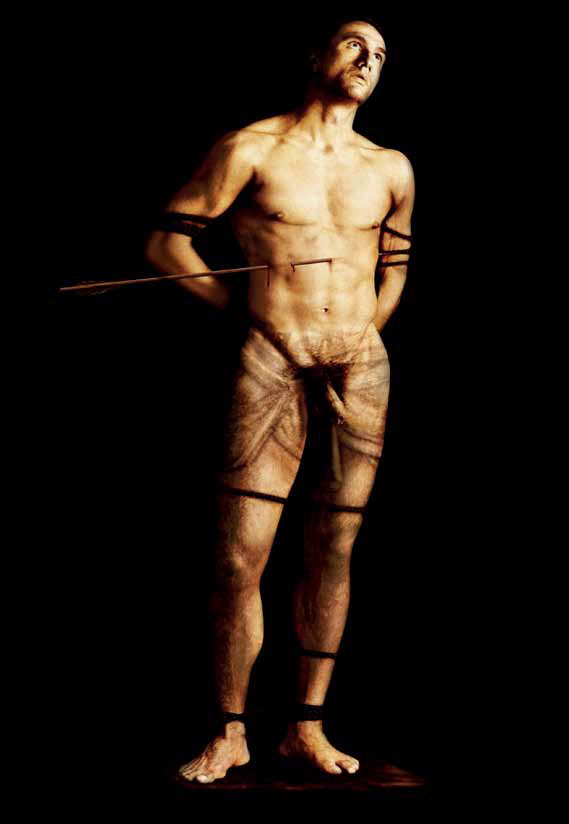
Sebastian’s Martyrdom – (Silvio Berlusconi’s private Collection)
This work dates from 1998. The artist recreates an oil painting, over a black and white ori-ginal picture, digitally transformed and then printed on a canvas. This is one of the unique pieces that was exhibited at the Palazzo Venezia in Rome for the 2008 Biennale. While the images raised some concern for their unflinching displays of nudity, they were also much praised for their technical ambiguity, because many in the crowds thought they were real oil paintings. The then Italian Prime Minister Silvio Berlusconi opened up the venue and loved the piece so much that he came back in a private visit and bought it for his private collection. Newspaper reports said that was the first time that Berlusconi bought a contemporary pain-ting for his private collection.
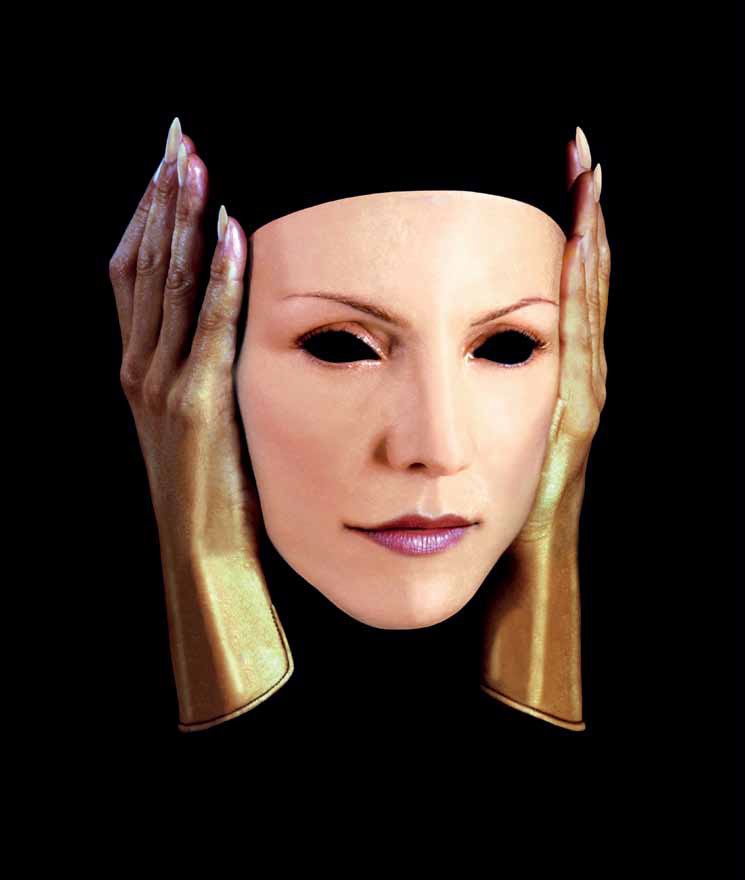
GThe Fashion’s Mask – (Martinelli’s collection)
This work belongs to a series of mask images. The hands with nail-like claws frame the perfect lifelike, yet lifeless face – realistic, yet a cold mask. It is an extreme vision of the icy soulless aesthetic canons of perfections dictated by the fashion industry that with its business has cre-ated millions of fashion victims. It is all suspended in the darkness, as if travelling in time, but without leaving a trail of history behind.
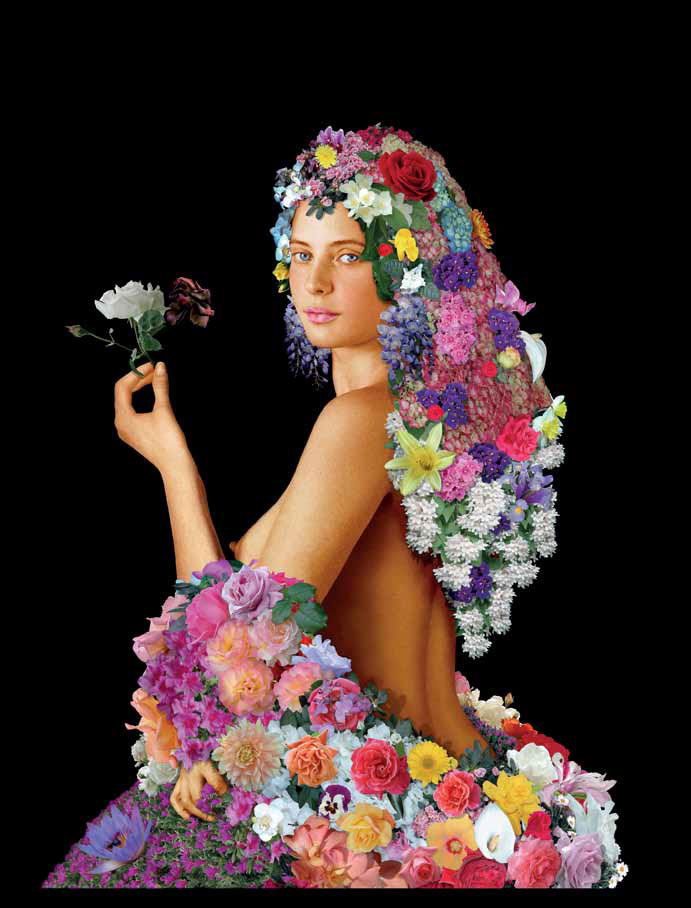
Flora – (Certaldo di Castro public collections)
This is a tribute to the ideal beauty (the erotic and living, Eros) but also to the temporality of it (the spectre of death, Thanatos). The concept is well explained in the details of the two roses that the goddess holds in her hand. The white rose is healthy and open; the red one is dry, a symbol that everything in nature is destined to fade and return to Mother Earth.
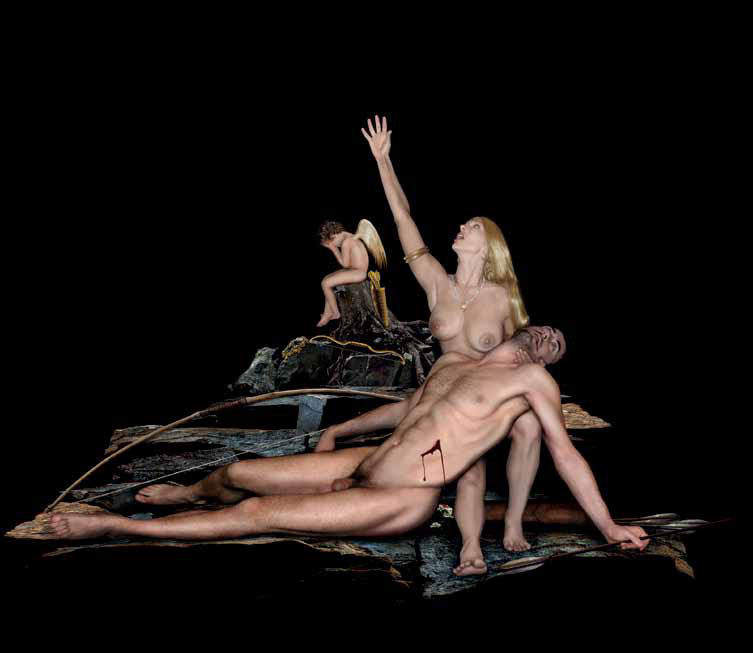
The Rooms of Venus and Mars
This is a series of digital works, each of which is some five metres across. The Death of Adonis shows Venus harrowed with pain, just like the Michelangelo Pieta, as she holds the dead body of her beloved. Behind the main scene, we can see her grieving son, Eros. From a corner, we can see the wild boar animal that the jealous Mars has transformed himself into to kill his love rival.

The Madonna of the Desire
This is a tribute and ante litteram to Antonello da Messina (1430-70), the Renaissance pioneer who used lenses and mirrors for his paint masterpieces.
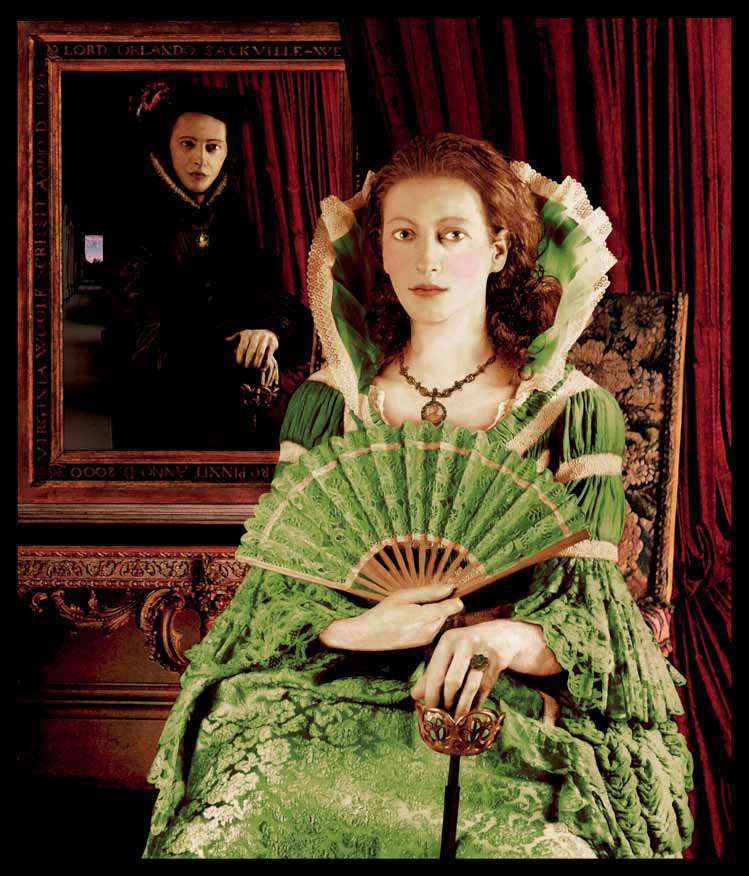
Orlando
This is one of the series of “Literary Portraits” that the artist dedicated to his favourite books. In this case, the Virginia Wolf sex-change character is represented in two guises. In the background, Orlando is shown as a fey Lord Orlando at the time of Queen Elisabeth I; then again immaculately transformed as a posed and sexy Lady Orlando in the 17th-century.
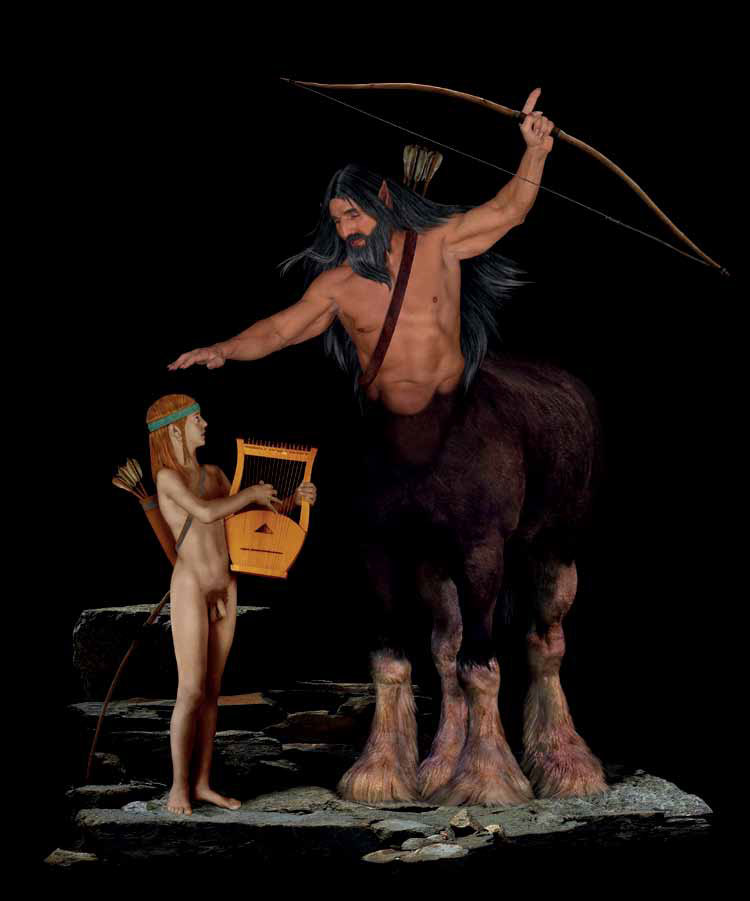
The Education of Achilles
This tells the story of the invincible Greek hero who has been entrusted for his education by his mother Thetis to the centaur Chiron, who was the custodian of all human knowledge.
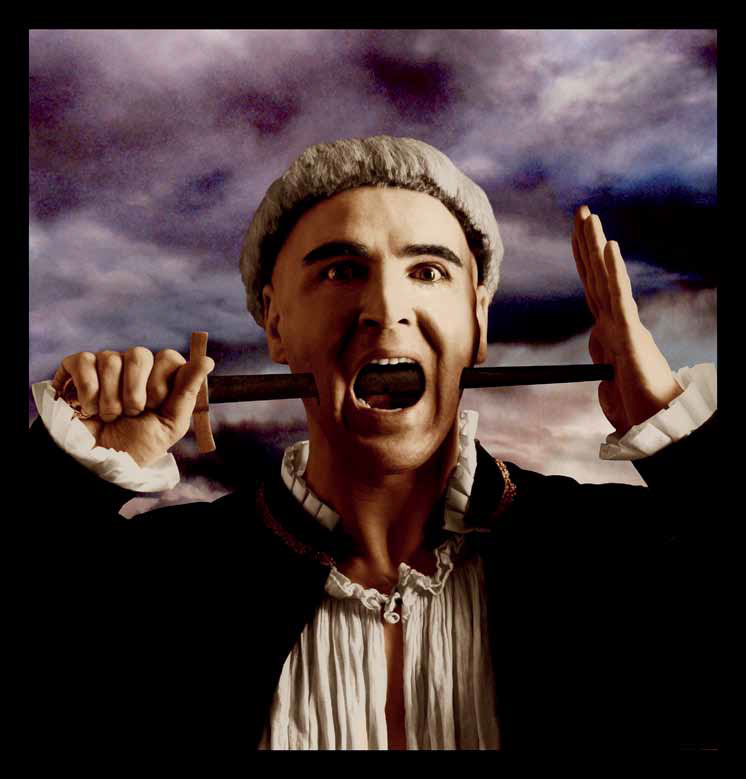
Ritual for Hamlet
“A man paints with his brains and not with his hands,” as Michelangelo said. Mataro da Vergato’s concepts well convey this. What to make of a picture such as Ritual for Hamlet, with the Black Prince stabbing himself through both cheeks and the dagger clearly visible inside his mouth? It is actually a self-portrait of the artist. The result is both photographic and painterly, striking because its craft, and yet the whole thing would have been nothing without the concept of making a Hamlet like no other.



